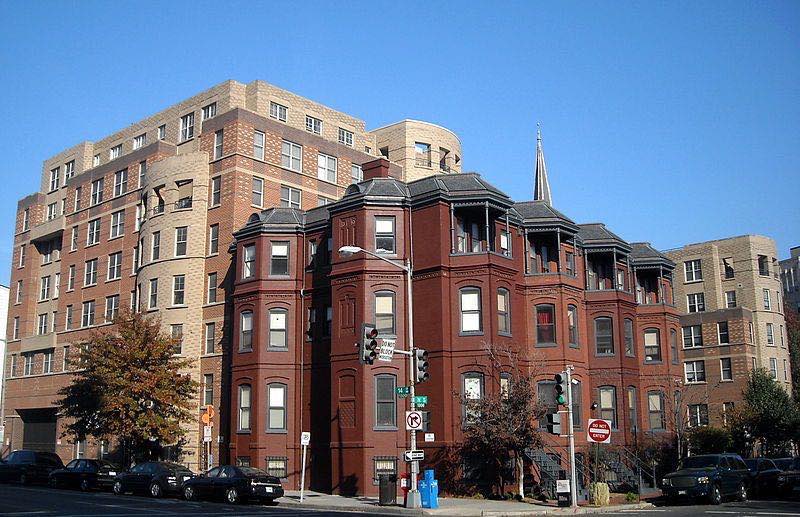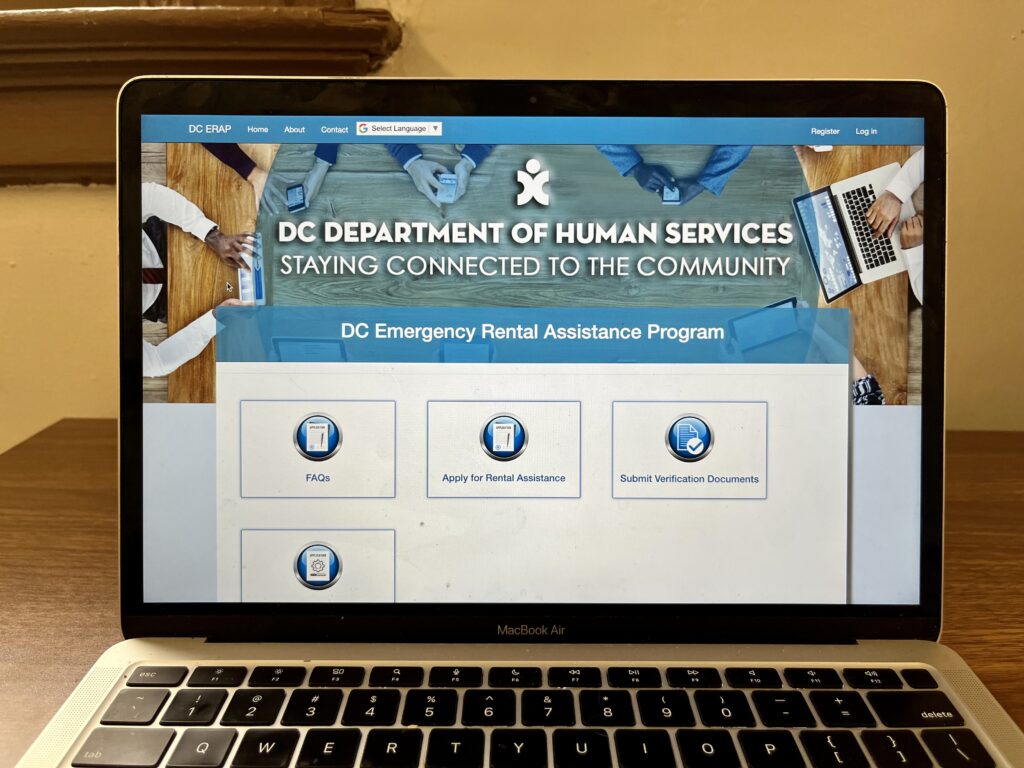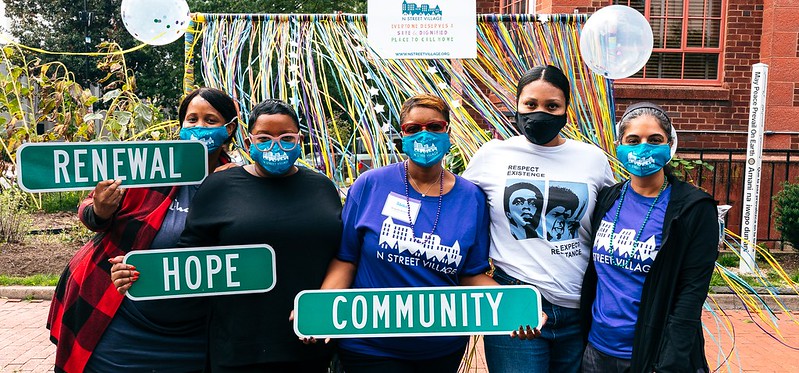The District government is aiming to prevent up to 1,000 individuals from needing to rely on the shelter system in 2019. The Department of Human Services is funding a program to divert single adults from homeless shelters by reconnecting them with past networks, such as a former employer or housing with family or friends.
Limited financial assistance will be distributed through partner nonprofit service providers to help make these arrangements possible. D.C. Council maintained the $875,000 Mayor Bowser proposed for “prevention and diversion services” for individuals in the FY2019 budget. Potential uses include recurring transportation assistance to a job, one-time transportation assistance to get to a relative’s home farther away, an automotive repair, first month’s rent, and support to a host household to help with utilities or rent. An initial appointment will be required to determine what services could be helpful.
[Read more: The council added $15.6 million to the mayor’s proposed budget for programs related to affordable housing]
Similar services have been implemented for homeless families since 2015, which DHS cites as a large contributor to the 38 percent decrease in families experiencing homelessness over the past two years. But this is the first program of its kind for adults who are on their own. It will target people who show up at a low-barrier shelter for the first time, or the first time after a long absence, and have no previous documentation of receiving assistance — and who remain at the shelter for a week or more and are not expected to “self-correct” or get out of the shelter without some help, according to DHS Senior Advisor for Family and Homeless Services Carter Hewgley. This program will also serve individuals returning from incarceration or who are aging out of the foster care system.
“Most resources go to the most vulnerable people: people with a disability, mental illness, long-term homelessness, etc. This flips that model on its head,” Hewgley said.
D.C. government uses a system called “coordinated entry” to prioritize the most medically vulnerable people to be matched to appropriate housing placements first. But the city’s 5-year strategic plan to make homelessness “rare, brief and nonrecurring,” first published in 2015, also emphasizes that prevention efforts are essential to reduce homelessness and intervene early to prevent a person’s health from deteriorating and their situation from becoming increasingly complex to resolve.
[Read more: D.C. reassesses system to funnel vulnerable residents to housing]
The importance of this goal was driven home by data analysis from the 2018 Point-in-Time Count of the local homeless community that was presented at a July 3 full meeting of the full D.C. Interagency Council on Homelessness “That’s a lot of information and we wanted to try and pull out the ‘so what,’ — what do we do with all of this information?” said ICH Director Kristy Greenwalt as the meeting came to a close.
“At the very highest level, the good news is the majority of people we house through our continuum of care programs are remaining stably housed,” Greenwalt said. “The not-so-good news is that very few people are self-resolving … So, once people are in our system, they are pretty much in until we help them out with a resource.”

For families experiencing homelessness, this work is called “diversion.” All families seeking shelter apply for it through the Virginia Williams Family Resource Center and and are first referred to the prevention program to try and identify alternatives. However, there is no application process for the low-barrier shelter system available to individuals because instead of a family receiving a secure room of their own that is available 24/7, individuals line up daily for bed space for a single night.
“And we’re not trying to change that or put up barriers to shelter.” Hewgley said. “So, we’re calling it ‘rapid exit.’ It will target people that have been there for one week.”
The homeless prevention program for families works a lot on diversion and mediation, according to Tanisha Schlechtriem, who manages the family prevention program at Wheeler Creek Community Development Corporation. “We look at the broader aspect, rather than just put a band-aid over it,” Schlechtriem said. “What caused you to become homeless? Is this going to happen again in two months? We try to identify how we can prevent this from being recurring.”
Everything is handled on a case-by-case basis and financial assistance is not always offered. If it is, the payment is a one-time intervention. Schlechtriem and the other program managers focus on maximizing existing community resources — some that clients may not be aware of — and developing a strategy for how to achieve a more stable economic situation. This could include learning how to build credit and addressing an eviction record or outstanding debt that may be holding the family back.
The program treats staying in a shelter as a last resort. After the Virginia Williams Family Resource Center determines a family is eligible for services, the prevention program has gone as far as expediting Emergency Rental Assistance Program funds to deliver to a landlord on the day an eviction is scheduled — provided a plan can be developed for the family to keep up with the rent, and an agreement brokered with any third party that may be necessary to do so.

DHS is still drafting the final “rapid-exit” model for individuals. The current plan is that after a candidate for the program is identified at the shelter, they can schedule an appointment with a diversion expert at a DHS daytime service center and take a shuttle from the shelter to their appointment
The diversion experts will be trained in the Cleveland Mediation Center model, which has been developed and tested by the center since it was founded in 1981. The organization now provides training nationwide, including for programs in Seattle and Los Angeles.
According to Hewgley, the conversations will help individuals “brainstorm creatively and be open to creative ideas to help get past survival mode.” The diversion experts will collaborate with participants to identify times when they supported others and networks or individuals that may be able to help with income or housing. The diversion expert will also inquire as to the client’s goals: do they want to permanently reunite with friends and family? Return to their own residence? Seek a safe place out of town? After identifying the desired outcome, DHS will intervene.
In every case, this financial aid will be small-denomination, and temporary. Any recurring financial help for individuals will end after six months. In a meeting of the D.C. Interagency Council on Homelessness, advocates expressed fear of individuals falling back into the shelter system after six months, when the aid ends.
According to the draft program, DHS would technically still consider a participant falling into homelessness after six months a “success.” Any length of time between episodes of homelessness less than three months will be considered unsuccessful, while anything above three months would rank from “moderately” to “highly” successful. The program managers have yet to decide whether individuals can participate in the program twice.
One advocate in attendance at the meeting worried about placing additional economic strains on a host household that may already be struggling.
“We do understand that some people who have lived in deep poverty may be afraid of seeking help from friends or family members because they don’t want to become a burden or risk for those people,” said Jean-Michel Giraud, president and CEO of Friendship Place. Giraud has led the nonprofit housing provider since 2006. Friendship Place has embraced the Housing First model in partnership with DHS and provides an array of housing and employment solutions.
“There is often a pattern of people moving on instead of seeking help [from their friend or family member] if there are barely enough resources in the household,” Giraud said in an interview. A number of people experiencing homelessness, and more recently, trainers from the Supporting Partnerships for Anti-Racist Communities initiative, have brought this path to homelessness to Giraud’s attention over the years.
In addition to financial assistance, Hewgley said D.C. will go much further than other jurisdictions in preparing a host household for a new member by requiring everyone involved to talk and sign a contract of expectations ahead of time, in hopes of avoiding problems later on.
The rapid exit program is expected to be rolled out in January. DHS is finalizing the model and is soliciting applications through Nov. 16 for nonprofit partners to provide the financial assistance.
“A diversion outcome could be an individual who is placed with their cousin and [Project Reconnect] is providing extra money for rent for the first three months. Or it could mean a person becomes a roommate with their friend and [the program] is providing gift cards for groceries and money for utilities,” Hewgley said. “We’re willing to be really creative.”
Eric Falquero contributed reporting.







